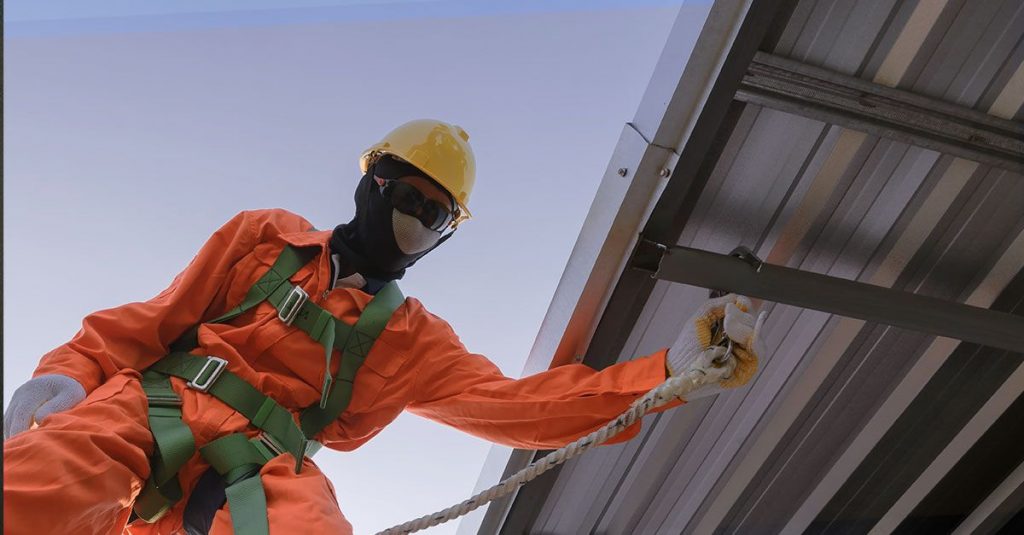As the lockdown eases and many businesses around the country slowly instil some form of normality, it can be hard to adjust to the new changes to operations. For outdoor businesses particularly such as construction sites and scaffolding it may be difficult to know what guidelines you need to follow to work safely and keep protecting from coronavirus. We hope this guide will help to provide you with the key facts you need to be as secure as possible in your work environment. All the information used in this article has been taken from the official government guidelines to guarantee its authenticity.
Start with a risk assessment
Just as you would do if you were assessing healthy and safety risks, completing a COVID-19 risk assessment is important. It’s not designed to give you more paperwork to do. In particular you must consider the risks to your staff and visitors and actions you can take to minimise them. Talking and listening to your workers can help you get a better understanding of alterations you could make. Often it is the people doing the work who have the best insights into the risks in the workplace and a view of how to work more safely. Also, in terms of morale which will likely be quite low after lockdown, involving them in decisions will make them feel valued and that you take their health and safety seriously.
Take preventative steps
You are responsible in the workplace to ensure everyone’s healthy and safety is protected. This involves working with other employers or contractors that share a workspace, if you collaborate with those around you then the wellbeing of their employees as well as yours will be taken care of. Prevention is a key component of the guide, have a look at these steps to apply them to your business.
- Ensure any visitors or workers who don’t feel well stay at home and do not come to your premises.
- Increase regular handwashing and surface cleaning as much as possible.
- Comply with social distancing rules to the best of your ability, this is 2m or 1m with risk reductions if 2m cannot be easily enforced. Some examples of how risks can be alleviated at 1m social distancing include, keep the time to complete at task in closer proximity short, use screens or dividers to separate workers, avoid workers being face to face by encouraging back to back or side to side measures.
- Take all actions possible to lessen the risk of transmission between staff.
- Keep workers in small groups of fixed partners so they are interacting with as few people as necessary.
- Have staff work from home where possible.
PPE and face coverings
The role of PPE is to protect the wearer from health and safety risks at work. Some items of PPE can include, safety helmets, harnesses and footwear, high-vis clothing, eye protection, gloves, and respiratory protection such as face masks. In a construction or scaffolding environment, it is likely you will have at least some of this equipment already for your workers. If this is the case, then you must continue to make use of those items, but additional PPE may not be of much benefit to you. The government have stated that workplaces should not encourage the use of extra PPE that isn’t needed for precautionary reasons. Don’t waste any extra time or money investing in PPE that is not required for your business. This should be apparent in your risk assessment, however if the assessment does suggest that your business needs extra PPE then you should respond immediately.
A face covering that covers your mouth and nose should be worn in enclosed spaces where it is not possible to social distance. It is important to note that face coverings are not replacement for other risk minimising actions such as social distancing and having fixed teams. Face coverings are not the same as PPE that is used to protect dust and spray hazards, so they should be purchased and worn separately.
Change shift patterns
It is important to organise your work to create separate groups and minimise contact between workers. Having staggered shifts so that employees are not arriving or leaving at the same time will help keep them as distanced as possible and mitigate congregations of workers. Also, avoid as much physical contact between staff as possible by having areas to leave items such as shared tools, and general materials to transfer them without touching.
We hope this guide to some of the new changes outdoor work environments should make has been helpful. If you’re looking for new scaffold towers or ladders for your business get in touch with our experienced team today to discuss your needs and how we can help. BPS is committed to providing your new equipment as safely as possible and making deliveries with ease during this difficult time.
No related posts.



